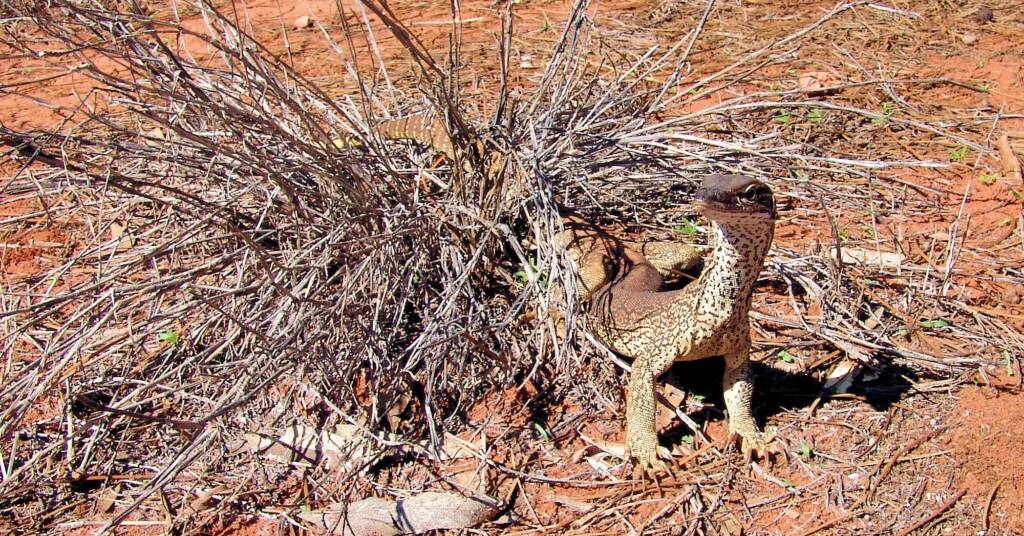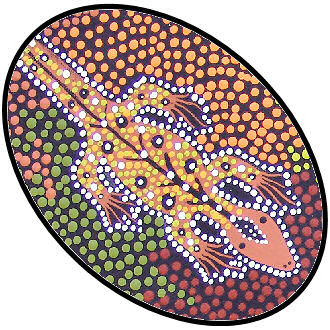Aboriginal Symbols of Fauna and Wildlife
| WARNING: Aboriginal and Torres Strait Islander people are warned that this website contain images, voices and names of people who have passed away. |
Indigenous Symbols, Iconography and Imagery
- Aboriginal Symbols
———————————— - Man Woman Child
- Human Activity
- Tools & Weapons
———————————— - Bush Food
- Bush Medicine
- Wildlife
- Emu
- Goanna
- Honey Ant
- Kangaroo
- Thorny Devil
- Witchetty Grub
————————————
- Landscape & Country
- Rain & Water
————————————
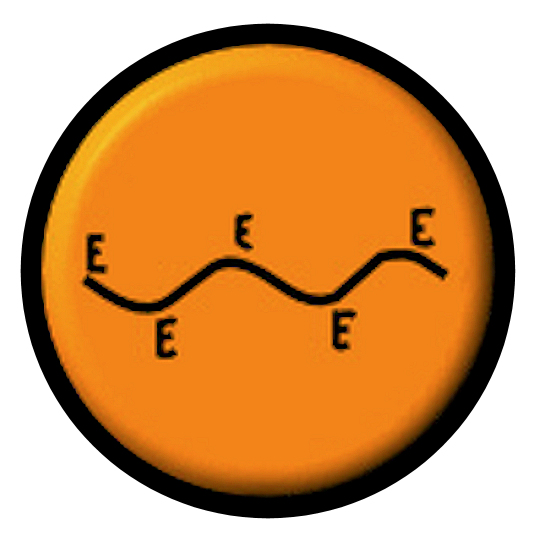
In the depiction of the Goanna, many artist stamp their own unique way of portraying the animal, whether it is just showing the tracks left by the animal or as the flattened outline or three dimensional form. The ‘Ngintaka’ goanna often also appearing in animal carvings.
Animals play a significant part in Indigenous culture, whether it is a totemic relationship, and part of a dreaming, or as food.
Appearing in the artwork of many Aboriginal artist, it’s place goes beyond the physicality of bush tucker, being depicted in a number of dreamtime and other stories, such as ‘Goanna Dreaming’.
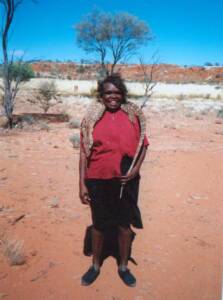
International renowned Dorothy Napangardi loved going hunting for food in the bush. There are some iconic images of her with a perentie casually draped around her neck. In the publication Honouring and Remembering the Art and Life of Dorothy Napangardi 1987-2013, the influence of flora and fauna in her paintings, including that of the perentie/goanna can be seen in some of her artworks.
There is another story that is described by the aboriginal artist Trephina Sultan Thanguwa in her work ‘Goanna Calling for Rain’:
The ‘Old People’ say when you see a goanna climbing up a tree or old log, it is calling for rain, to bring life back to the land, calling to the spirits who may be willing to listen and send rain.
Source: Trephina Sultan Thanguwa
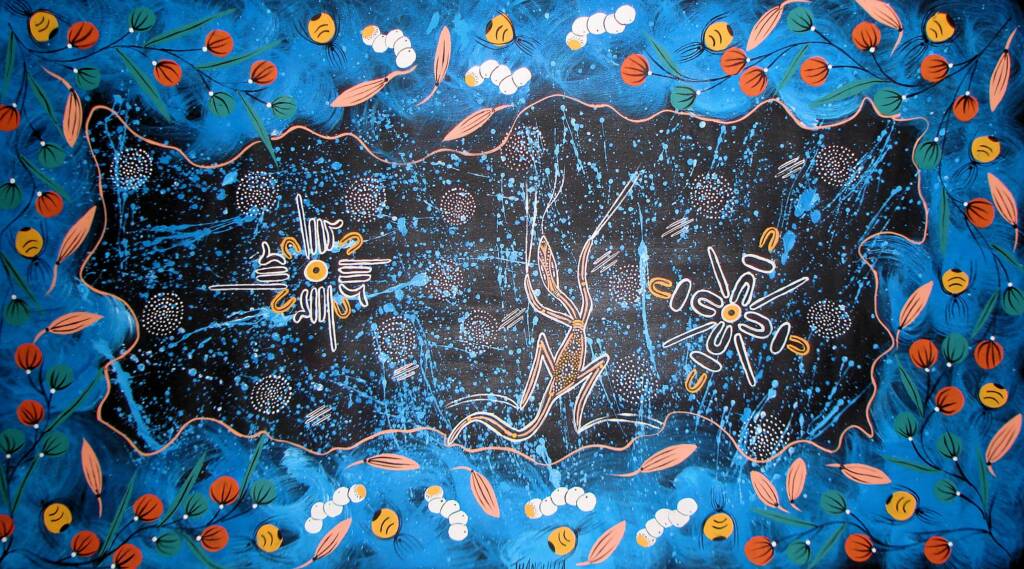
The work above is based on a photograph shown to the artist by Ausemade of a goanna curled around a tree stump in the Breakaways, South Australia.
Different artists often have their own style when depicting the goanna in their artwork. Some are depicted in a stylized form, whilst others portray a more realistic image, whilst still using their own trademark style.

Whilst the above imagery by Clarabelle Swift have a child-like gentle appeal, the below by June Sultan have a harder edge
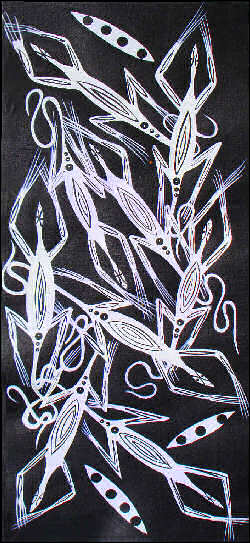
Goannas and Eggs © June Sultan 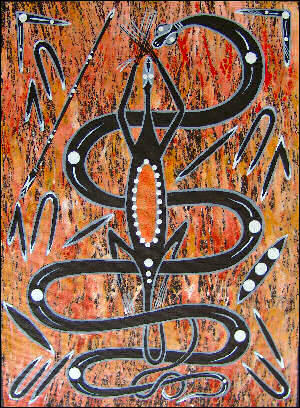
Women – Men Hunting Bush Tucker (Snake / Goanna) © June Sultan
In the following works by Danny Goodwin and Rex Sultan-Jabangardi, the life-like and stylised goannas are placed within their environment. Both paintings depict the entrance to their burrow, with the Danny Goodwin painting depicting single and multiple entrances and collecting their eggs. In the Rex Sultan-Jabangardi painting the burrow is in spinifex country, surrounded by the spinifex.

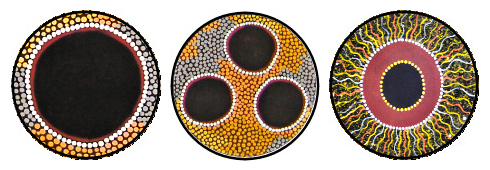
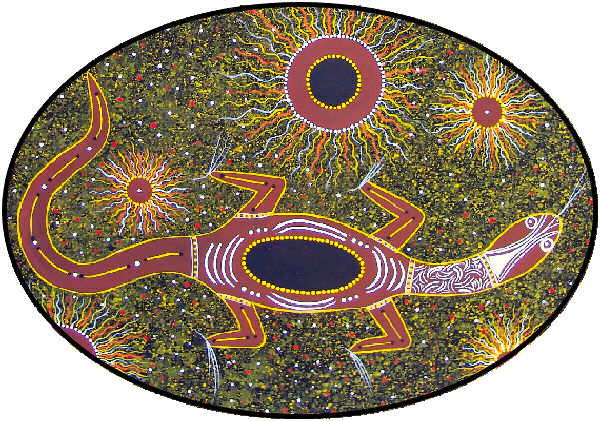
Is it a Goanna or a Perentie?
Perentie and goanna, sometimes described interchangeably when translated into English, have their own unique Aboriginal word depending on the tribal language.
In Aboriginal art, there is a difference between the Goanna and the Perentie, as depicted in the ‘How the Perentie and Goanna got their Colours’ by Trephina Sultan Thanguwa (below).

The goanna is often depicted in paintings along with other symbolic imagery, whether it is in the story of ‘bush tucker’, hunting, dreamtime or totemic illustration.
With some artwork and their stories, confusion seem to arise in the English description and translation of the story behind the piece. Some art pieces may be titled in English but include the aboriginal name/words, for example ‘Echunpa —Goanna’. Echunpa is the aboriginal word for a large lizard, that refers to the species Varanus giganteus, otherwise known as the Perentie.
When you consider the number of Aboriginal languages, that can describe the single English word ‘goanna’, then it is not surprising that confusion can arise. The answer lies in understanding the story as a whole, how the piece has been depicted, does it look like a perentie or a goanna, or in the actual title of a piece ‘Ngintaka Dreaming’, Ngintaka being the giant perentie lizard spirit.
The image of goanna and perentie can be seen in numerous works including those of Arthur Robertson (Tjatitjarra), Daniel Goodwin, Clarabelle Swift, June Sultan Narpandi-Arpungada, Rex Sultan-Jabangardi, Trephina Sultan Thanguwa, Selma Coulthard, Janet Spencer Nungurrayi (Wardapi Jukurrpa – Goanna Dreaming).
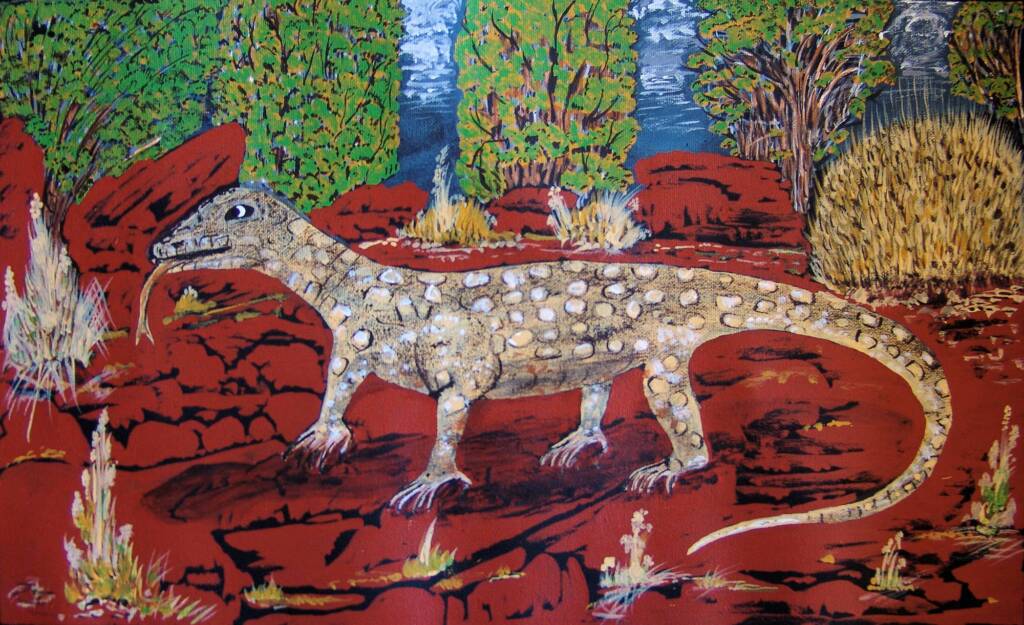
Other examples of Aboriginal words to describe the ‘goanna’ and related information is detailed as follows. Information from mainly Central Australia text, contact the Alice Springs Library for more information.
Pintupi / Luritja Dictionary
by K C & L E Hansen, 3rd edition, 1992, IAD Publication, ISBN 0 949659 63 0
| Indigenous word | English interpretation |
| pilarrpa | goanna; the goanna which inhabits the sandhill country |
| kurrkati | goanna type, sand goanna, inhabits sandhill country. |
| tinks | goanna type; sand goanna; inhabits sand country; |
| katata makanpa yaranpa | goanna burrow |
| tjuulpa | goanna hole |
| kurrkati nyintjirri pana kaninytjarra panapuru rumiya tinka wanirri | goanna type |
Check out our Reptile section for fauna information about the Goanna and Perentie.
